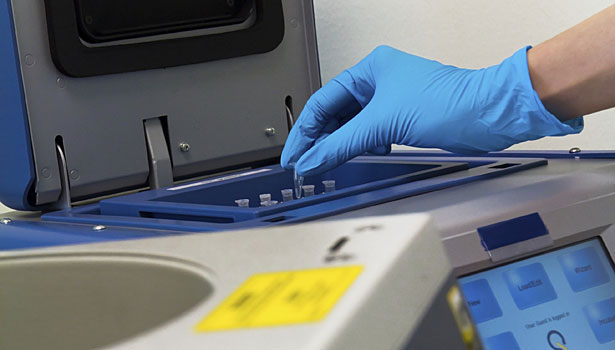The meat and poultry industry has been under intense scrutiny about its food-safety practices for at least 20 years, driven by the notorious Jack in the Box E. coli incident 20 years ago. It led to a thick encyclopedia of new rules and regulations, as a seriously spooked industry and its government overseers found themselves questioning everything they had done until that seminal moment.
The most pronounced change was the introduction of Hazard Analysis and Critical Control Points (HACCP) principles in the late 1990s. The industry was already working on the concept in 1994, when the International HACCP Alliance was established to assist in its implementation.
Dr. Dell Allen — who was a Cargill vice president with responsibilities for training, quality assurance, food safety and regulatory affairs from 1988 until he retired in 2004 — sat at “ground zero” during one of the most explosive eras of new government rules and regulations. Despite all those changes in how business was done, he thought the industry accepted it in a remarkably even-handed manner.
Talking about the industry’s attitude about food safety, he said, “It was greatly enhanced when the AMI Board as a group made the decision in 2001 that food safety was an issue that should not be used as a competitive advantage. The issue raised its head right after Cargill developed the steam pasteurization cabinet.”
Greg Page, who was Excel Beef’s president at the time and was on the AMI Board, was the one who pushed that decision.
“I think this industry-wide sharing and cooperation did more to advance food safety through the early 2000s than anything else,” Page said. “Through cooperation and sharing, we all moved further faster.”
More importantly, Page took the rancor out of an industry that was still shell-shocked and convinced its members that working together was a better solution.
The “let’s do it together” attitude led to a major success: the identification of the cause and a major reduction in foodborne illness associated with E. coli O157:H7. Carol Tucker-Foreman, distinguished fellow at Consumer Federation of America’s Food Policy Institute, said, “From the beginning of E. coli-related outbreaks, both the public and industry accepted that E. coli illnesses, especially HUS, were more than ‘just a bellyache.’
“The USDA declared that E. coli was an adulterant and followed up with the really big stick — requiring inspectors to test for pathogenic
E. coli in the plants on a regular basis,” she added.
The reaction to the USDA’s “big stick” approach was mostly positive. Although a few were concerned about the cost of compliance, most in the industry realized major steps had to be taken quickly and the biggest players began rigorous testing regimens.
However, in late 2011, a consumer advocate-driven decision to test for other strains of E. coli STECs, known as “the Big 6,” was not so easily accepted. The beef industry complained that reliable testing protocols had yet to be developed.
On behalf of its members, AMI’s James Hodges (then executive vice president) said in a statement: “In short, the policy is not likely to yield a significant public health benefit and given that research should precede and dictate the policy, the process that FSIS has followed in this matter no way develops good public policy.”
The industry kickback worked. The directive was delayed until more reliable test methods could be commercialized.
Tucker-Foreman gave the beef industry a big pat on the back for the work it had done to get a handle on the E. coli scourge, but didn’t mince words when it came to the poultry industry.
“For almost 20 years, the beef industry has been improving its public health profile by preventing E. coli contamination,” she said. However, regarding the poultry industry, she said, “They’ve done nothing to reduce Salmonella contamination, though.”
Comparing the poultry industry’s ongoing Salmonella battle with the E. coli successes of the beef business, she chastised the industry, wondering “why any business would sit still while government gave their competition a big, wet kiss?”
Her analogy of the beef industry having earned a big, wet kiss isn’t an exaggeration. In fact, Al Almanza, the USDA’s Food Safety and Inspection Service administrator, tells a story about one of his colleagues who worked in the produce industry. He was asked how they could combat outbreaks of foodborne illnesses. The suggestion offered? “Talk to the people in the beef industry.”
Despite the recent praises heaped upon portions of the industry, there is no doubt it still can bristle at certain food-safety requirements, situations or events.
Dr. Gillian Dagan, chief scientific officer at ABC Research, has noticed some meat industry foot-dragging on recent FSIS initiatives — maybe an indication that the rising number of federal regulations has finally pushed the industry too far. Her work takes her all over the country, and some of the privileged conversations she has had indicated a growing problem with new FSIS rules and regulations pushed by consumer activists that might not be scientifically sound.
“From my work with the meat and poultry industries, processors are eager to support food-safety initiatives that have a sound scientific foundation,” Dagan explained. “I think the biggest issue lies when regulatory bodies pull the trigger prematurely, like in case of STEC testing.
“Without full development of robust rapid and cultural methods to use for testing,” she added, “many processors express frustration in the mandate. They agreed with the risk associated with the organisms but wanted to see a more complete plan of attack prior to regulatory action.”
A conversation with several CEOs of mid-size processors agreed with Dagan’s perception. All of them were advocates of additional measures to improve food safety, even after acknowledging the added cost might be a serious drain on their bottom line. One commented that the alternative was almost certain bankruptcy, but was cautious about any new rule that would force him into a costly and unproven procedure.
“We have to be careful that we don’t spend money where we won’t be able to (or can’t) measure the results,” he said.
Another CEO added: “I can solve 99 percent of my food safety problems with one well-executed hurdle, but I still have to attack that last 1 percent, and the cost to do that with a second hurdle is similar to what I paid for the first one and it will still leave some risk.
“Do I have to go to a third and fourth step, each just as expensive as the first but chasing an ever smaller result? Where do I stop?” the CEO asked.
Therein lies the proverbial million-dollar question of food safety.









